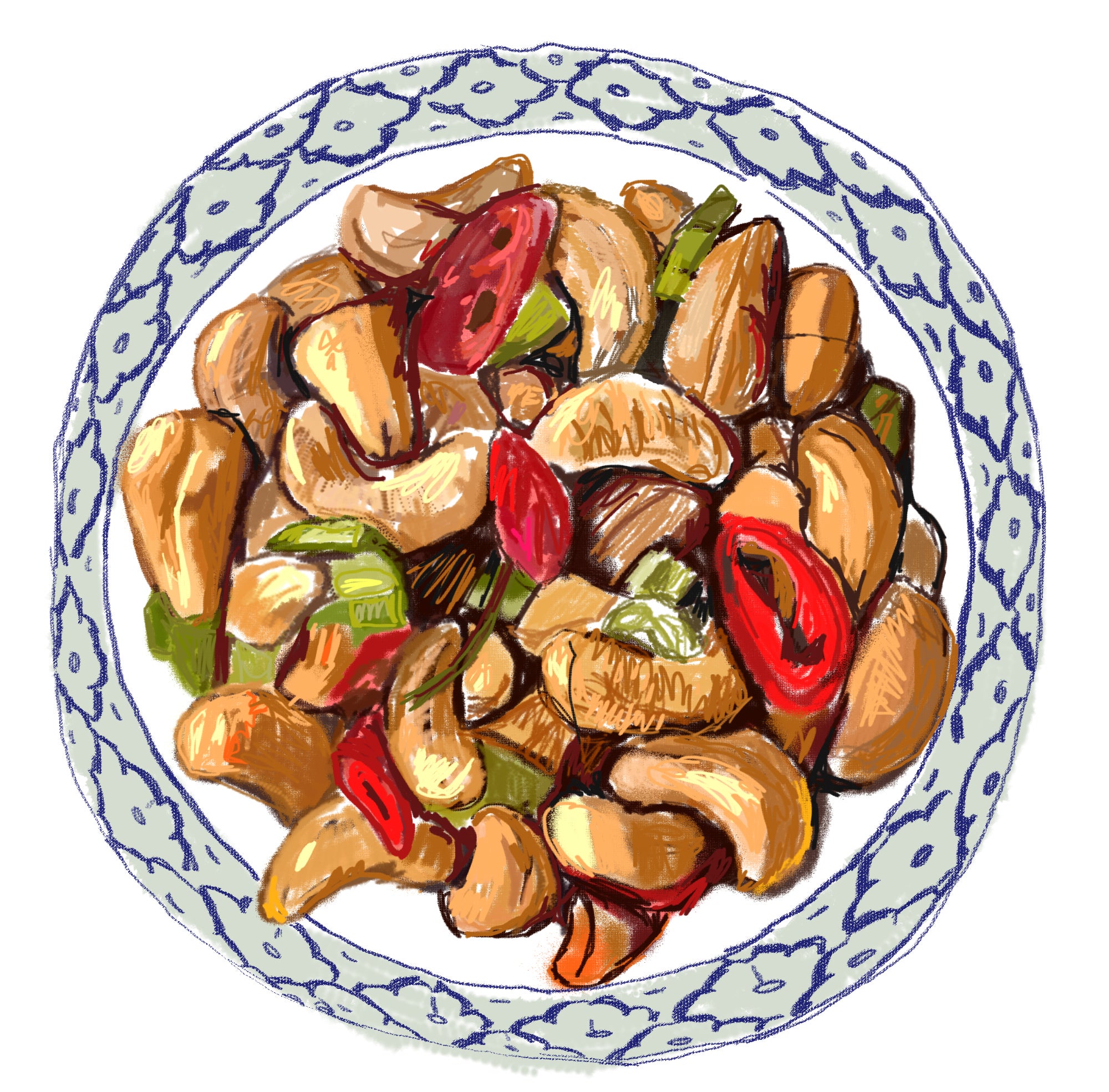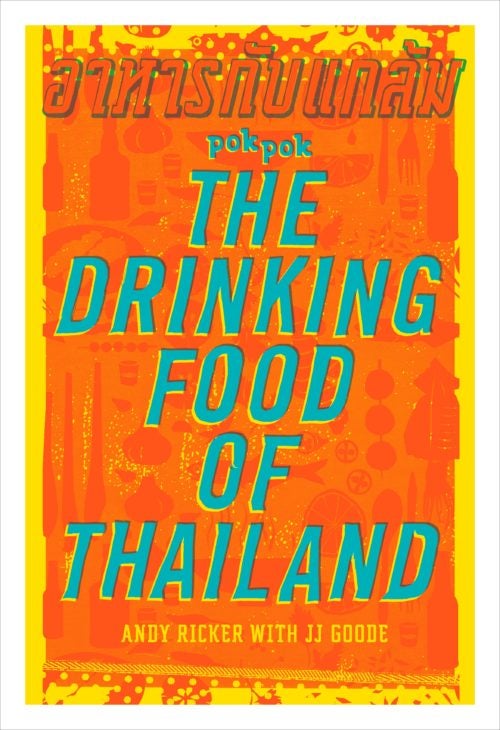
Sometimes to write a great cookbook, it takes both a meticulous cook, like Andy Ricker, and a lazy cook, like JJ Goode.
Five years ago, when I met Pok Pok guru Andy Ricker over coffee to convince him to let me help write his first cookbook, I pitched him hard on a sort of Thai Food for Dummies, 30-minute meals for the thrill-seeking set. Because making Thai food, with its mortars and tiny chiles and galangals, sounded arduous. And who better to teach people how to doctor store-bought curry paste or identify a reasonable Stop & Shop-sourcable substitute for green papaya than the man who has made the Northern Thai curry with noodles called khao soi almost as recognizable to Americans as red curry?
Ricker greeted my proposal with a hard no. A few months later, I was logging his preferred recipe for laap, one he learned to cook in a village outside of Chiang Mai, one that begins with instructions for pounding an 18-ingredient paste, then proceeds to direct readers to immerse their hands in a bowl of pork blood and later hand-mince loin for a good 40 minutes—preferably with a scimitar-shaped cleaver made for this very purpose.
I don’t dice. I’d really rather not clarify butter. Even after coauthoring a dozen cookbooks with the likes of April Bloomfield and Dale Talde, I rarely ferment cabbage, roll out pasta, or deep-fry. Despite my day job, I am, deep in my soul, an amateur cook whose lack of ambition borders on laziness. But Ricker had sold me on his vision for a Pok Pok cookbook, which was essentially the opposite of mine, and in the process taught me a lesson about cookbooks themselves. For him, writing a cookbook wasn’t about guiding readers to leveled-up weeknight meals or even inspiring the occasional impress-your-friends Saturday dinner, though both are laudable goals, and that laap would certainly do the latter. Instead, it was about celebrating his culinary mentors and the country that he loved.
It was the culmination of two decades of learning. And although he never put it in such grandiose terms, it was about contributing to a historical record, writing down recipes, often for the first time in English, for Thai dishes virtually unknown to phat thai–slurping, satay-scarfing Westerners like myself, dishes that even in Thailand are becoming harder to find.
The more I learned about his philosophy at Pok Pok, the more clearly I saw that Ricker writing Thai Food for Dummies would be like Paul Ryan penning a book on political courage. In other words, his words would be the opposite of his deeds. The book we would ultimately publish is full of recipes like the one for that laap—in spirit, if not in labor required. Each required going the extra mile to make food faithful to the dishes Ricker loves.

After traveling, cooking, and eating with Ricker in Thailand, I came to appreciate his efforts, both minor and major, to replicate the flavors there. I tasted firsthand how tweaking the sharp acidity of the juice of Persian limes (the kind ubiquitous in the U.S.) with a squeeze of Meyer lemon mimics the flavor of the limes common in Thailand, so the juice contributes a more subtle, perfumed tartness to Thai salads and dipping sauces. I understood why he insisted on holy basil to make phat kaphrao, rather than offering an option for the much-easier-to-find Thai basil, since the particular aroma of the herb (called bai kaphrao in Thai) is so vital to the stir-fry of ground meat and chiles that the dish is essentially named for it.
I saw how essential it was to pound a paste of lemongrass, galangal, cumin, and coriander (among many others) in a mortar to make khao soi, since the typical advice of subbing in store-bought red curry paste results in a dish that tastes as much like great khao soi as tricked-out Prego marinara does like proper ragu bolognese.
The more I learned about his philosophy at Pok Pok, the more clearly I saw that Ricker writing Thai Food for Dummies would be like Paul Ryan penning a book on political courage.
Ricker’s latest cookbook, The Drinking Food of Thailand, however, is different in a big way: While his deep dive into the country’s culture of boozing and the salty, sour, spicy snacks it inspires features recipes that are similarly scrupulous and uncompromising, those recipes are decidedly less arduous. Not because he dumbed them down, but because those snacks, by their nature, just happen to be easier to make. They’re essentially bar food, after all.
Of course, my lazy streak still crept into the process of writing the book—perhaps, I ventured, we could find a way around fermenting masses of pork skin and meat in banana leaves until they smelled sour. Is there any way, I asked, to make som tam thawt (deep-fried papaya salad) without, like, deep-frying? It took only a sideways glance from Ricker for me to relent. And anyway, so many of the recipes hit that sweet spot of weeknight-easy and oh-my-god good. There’s shrimp, grilled in its shell and served with a sauce of charred chiles, garlic, and lime. There’s poached squid tossed in a simple spicy-tart dressing. There’s the Northern Thai masterpiece jin tup (essentially, “hammered meat”), which is marinated with MSG, grilled way past medium rare, and then actually hammered on a sturdy cutting board until it breaks down into a web of irresistibly chewy shreds.
Then there’s yam met mamuang himaphaan. It’s a marvel, each bite a symphony of sweetness and richness, saltiness and herbaceousness and fire. The recipe calls for cashews to be browned in a little oil, then sprinkled with salt and topped with sliced scallion and fresh Thai chiles. There are many ways to make yam met mamuang himaphaan—some decked out with goodies like ground pork, and some tossed with fish sauce-lime juice dressing, like other Thai yam (or “salads,” in the Western attempt at translation)—but in the end, the version that Ricker landed on was the most elemental. It’s the easiest recipe in the book. And it may not surprise you that it’s my favorite.
